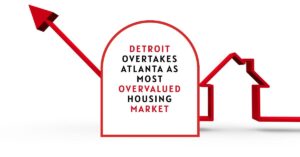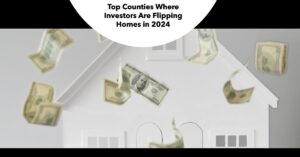As the summer of 2024 unfolds, the mortgage landscape presents a mixed bag of opportunities and challenges for potential homebuyers and homeowners looking to refinance. The start of the season has brought with it a slight decline in mortgage rates, offering a glimmer of hope amidst a period of elevated rates.
Mortgage Rates Dropped in June: Experts Predict Downward Trend
According to recent data from Freddie Mac, the average 30-year fixed-rate mortgage has seen a decrease from 7.06% in the previous month to 6.92% in June. This reduction follows a surge that saw rates climb from 6.64% in January to over 7.2% in May.
This downward adjustment is attributed to a moderation in inflation data and a corresponding dip in the 10-year Treasury rate, which fell by 15 basis points from 4.52% in May to 4.37% in June.
Analysts from the National Association of Home Builders (NAHB) forecast a continued slight decline in 30-year mortgage rates to around 6.66% by the end of 2024, with a further decrease to just under 6% by the end of 2025 as inflation approaches the Federal Reserve's target.
However, it's important to remember that the Federal Reserve doesn't directly control mortgage rates. Instead, the Fed influences mortgage rates by setting the federal funds rate, which is the interest rate that banks charge each other for overnight loans. When the Fed raises the federal funds rate, it typically leads to higher interest rates across the board, including mortgage rates. Conversely, when the Fed lowers the federal funds rate, it can lead to lower mortgage rates.
The NAHB's forecast is based on the expectation that the Fed will continue to raise rates in the near term to combat inflation, but then ease off on the brakes later in 2024 and into 2025 as inflation shows signs of cooling down. This would allow mortgage rates to come down gradually.
Beyond the National Averages: Tailoring Your Strategy
While the national averages provide a general idea of mortgage rate trends, it's important to remember that your specific rate will depend on several factors, including your credit score, loan type, down payment amount, and location. For instance, borrowers with excellent credit scores may qualify for rates that are a full percentage point lower than the national average. Conversely, those with lower credit scores may see rates that are higher.
Considering Different Loan Options
Beyond the standard 30-year fixed-rate mortgage, a variety of loan options are available, each with its own advantages and disadvantages. FHA loans, for example, can be easier to qualify for with a lower down payment, but they often come with private mortgage insurance (PMI). VA loans are another option for veterans and active-duty military personnel, offering competitive rates and no down payment requirement. Understanding these different options and how they can be impacted by fluctuating rates is crucial for making an informed decision.
The Impact on Different Housing Markets
The effect of mortgage rate fluctuations can vary depending on the specific housing market. In hotter markets with high demand and low inventory, even a small increase in rates may not significantly slow down buyer activity. However, in more balanced or buyer's markets, a rise in rates can have a more pronounced effect, potentially leading to a decrease in buyer competition and an increase in available properties.
The Role of a Mortgage Broker
In this dynamic environment, working with a qualified mortgage broker can be invaluable. A good broker can shop around for the best rates from multiple lenders, taking into account your individual circumstances. They can also help you understand the different loan options available and choose the one that best suits your needs.
The current state of mortgage rates underscores the importance of staying informed and working with knowledgeable financial advisors to navigate the complexities of home financing. Whether you're a first-time homebuyer, looking to upgrade, or considering refinancing, understanding the trajectory of mortgage rates and the economic factors influencing them is crucial for making well-informed decisions.
As we look ahead, the potential for further rate declines provides a hopeful outlook for the housing market. However, it's essential to recognize that the market remains dynamic, and rates can fluctuate based on a myriad of economic indicators. Staying abreast of these changes and seeking expert advice can help you seize opportunities as they arise and mitigate the impact of higher rates on your home purchasing or refinancing plans.
ALSO READ:











